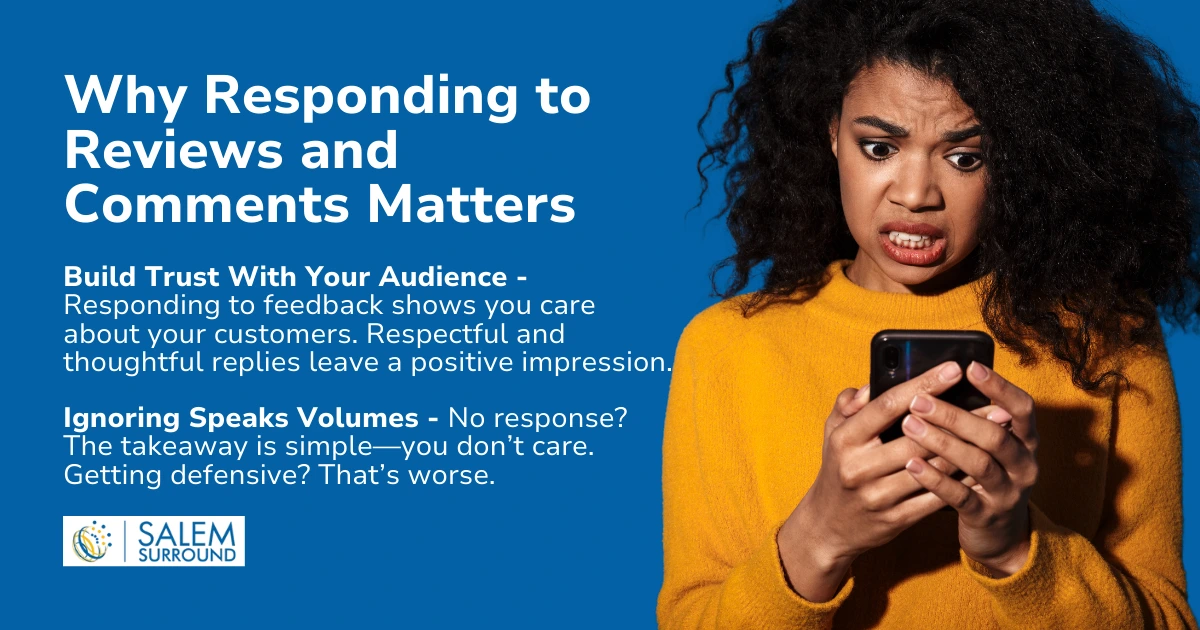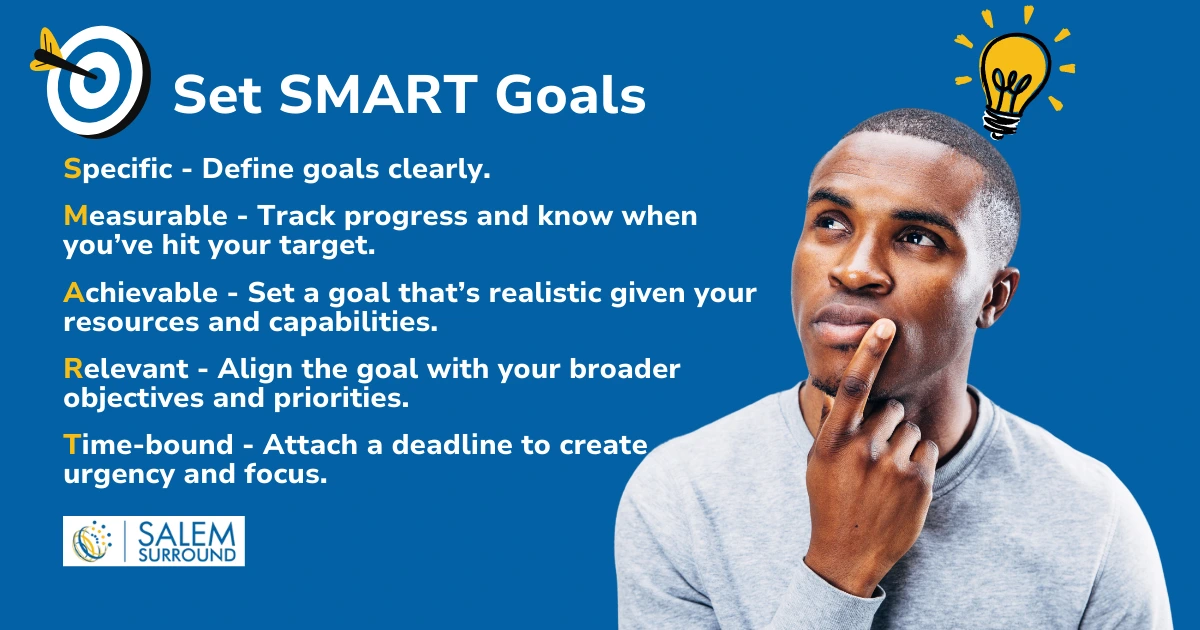Stop Making These 10 Digital Marketing Mistakes in 2025
Digital Marketing Strategy

Are your digital marketing efforts underperforming? You’re not alone. Every year, many small to medium-sized businesses lose time, money, and potential customers by making the same marketing mistakes again and again. But the problem isn’t a lack of effort. It’s a lack of strategy. With constantly evolving technologies, new privacy regulations, and a crowded marketplace, the stakes have never been higher. But here's the good news—You have the power to set up your business for success.
Here are the top digital marketing mistakes to avoid in 2025 (and how to fix them before they cost you another customer).
1. Underestimating the Power of Your Website
Your website is the foundation of your digital presence. It’s where all your ads, social posts, and inbound traffic converge. Yet many businesses fail to maintain it. Outdated designs, slow loading times, broken links, and missing meta-descriptions can cost you credibility, traffic, and, ultimately, leads and revenue.
How to Fix It:
- Run frequent audits with tools like Google Analytics to identify technical errors.
- Optimize your site’s speed. Compress large files, clean up your code, and use reliable hosting services.
- Regularly update your content with relevant blogs and resources to keep visitors engaged.
Investing in professional SEO services can also ensure technical maintenance is handled consistently.
Find Out What Your Website’s Missing—Get Your FREE Digital Marketing Snapshot Report!
A well-maintained website doesn’t just look good. It builds trust and delivers a seamless user experience that keeps visitors coming back.
2. Not Fully Leveraging Demographic Data
Modern consumers expect personalized experiences, and generic messaging no longer works. Without a clear understanding of your audience, your digital campaigns will feel irrelevant at best and alienating at worst.
How to Fix It:
- Use tools like Facebook Audience Insights or Google Analytics to collect demographic data.
- Build detailed customer personas, including age, income level, interests, and online behaviors.
- Tailor your campaigns to your audience segments and make sure your message resonates with the right people.
Knowing your audience is the first step to creating content that speaks directly to them (and drives results).
3. Obsessing Over "Going Viral"
EVERY business (even the larger ones) dreams of viral content, but chasing virality is often a distraction. Viral content is temporary and rarely attracts your ideal audience. What’s worse, controversial or shocking content can alienate loyal customers.
How to Fix It:
- Aim for consistent, high-quality content that aligns with your brand voice.
- Focus on building long-term value through blogs, case studies, and tutorials that educate and connect with your target market.
- Use storytelling to foster emotional connections that leave a lasting impression.

Slow and steady wins the race. Instead of gambling on virality, build sustainable growth with content that strengthens client loyalty. Invest in content marketing strategies that position your business as a thought leader in your industry—Credibility never goes out of style.
4. Overspending on Paid Ads
Yes, paid ads are effective, but they’re not magic. A flashy campaign can get clicks, but if your landing page doesn’t convert or your audience targeting isn’t precise, you’ll waste your budget without real returns.
How to Fix It:
- Allocate only a fraction of your budget to paid advertisements.
- Use A/B testing extensively to refine your ads and make sure you reach the right audience.
- Combine paid efforts with strong organic strategies like SEO, content marketing, and email campaigns.
When done right, paid ads are a great tool, but they should never be your ONLY strategy.
5. Neglecting Customer Engagement
Your customers want to feel heard, valued, and connected to your brand. If you’re not engaging with them on review sites, social platforms, or via email, you’re missing countless opportunities to build loyalty and trust.
How to Fix It:
- Respond to customer reviews (both positive and negative) as quickly as possible. Acknowledging feedback shows you care.
- Use social media to host polls, answer questions, and start conversations with your audience.
- Send personalized thank-you messages or loyalty rewards to long-term customers.

People don’t just buy your product. They buy your brand story. Share testimonials, user-generated content, and behind-the-scenes glimpses to create a stronger bond.
6. Abandoning Proven Strategies for Trends
We get it - New platforms, tools, and advertising mediums are exciting. But chasing every new trend risks creating inconsistencies in your marketing and pulls resources from what’s already working for you.
How to Fix It:
- Use a hybrid approach. Keep your current high-performing strategies (like SEO or email marketing) while experimenting with new ones in small, manageable steps.
- Track return on investment (ROI) closely to understand if a new tactic is worth scaling.
For example, digital audio advertising could be perfect for modernizing your mix, but it shouldn’t completely replace successful social campaigns or blogs.
Balance innovation with consistency by scheduling regular reviews of your digital channel performance.
7. Forgetting the Power of Blogging
Still think blogs aren’t worth it? Think again. Blogging drives SEO, builds trust, and keeps your audience engaged. Yet so many small businesses neglect this low-cost, high-impact marketing tool.
How to Fix It:
- Post high-quality blogs consistently. Aim for at least one a week.
- Share actionable insights, personal anecdotes, or industry trends to make your expertise shine.
- Use SEO best practices, including target keywords, meta descriptions, and optimized images.
8. Ignoring the Mobile Experience
With mobile accounting for over 50% of web traffic, ignoring mobile optimization is like willingly losing half your audience.
How to Fix It:
- Ensure your site is responsive, meaning it works seamlessly on all devices.
- Compress images and videos to cut down page load times.
- Test mobile pages frequently to ensure smooth navigation and functionality.
9. Failing to Set (and Stick to) Real Goals
Without clear and measurable goals, it’s impossible to track your progress. Yet so many businesses begin their digital efforts without specific objectives in mind.
How to Fix It:
- Use the SMART framework to set Specific, Measurable, Achievable, Relevant, and Time-bound goals.
- Regularly monitor progress using tools like Google Analytics.
- Break your goals into weekly or monthly milestones to make them easier to track and tweak.

Define key performance indicators (KPIs) upfront to measure success accurately - Whether it’s clicks, conversions, or revenue growth.
10. Trying to Do It All Alone
We get it—Small businesses have limited resources. But trying to juggle everything in-house can lead to shortcuts, burnout, and missed opportunities.
How to Fix It:
- Identify the skills your team lacks, whether it’s SEO, design, or paid ad management.
- Partner with professional digital marketing services for a cost-effective way to fill gaps.
- Use freelancer platforms to delegate smaller tasks like content writing or social posting.
Make 2025 the Year You Dominate Digital Marketing
Success isn’t just avoiding mistakes—It’s taking proactive steps to thrive. By addressing these pitfalls and implementing simple, impactful strategies, you’ll transform your digital marketing efforts from costly chaos into a well-oiled machine.
Ready to take your digital marketing strategy to the next level?

